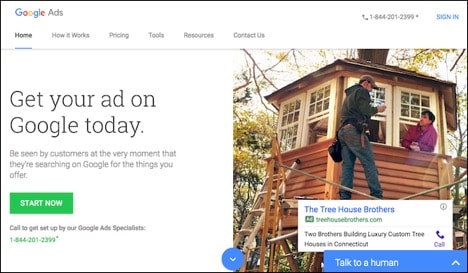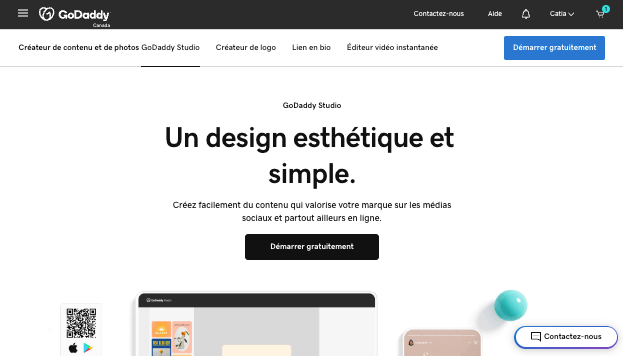If you’re looking to grow your business, it pays to get in Google’s good books. In this post, I’ll show you how to get on search engines’ list.
These days, it’s pretty rare for people to buy a product or service without doing at least a quick digital search first. In fact, 69 percent of Canadian consumers do an online search prior to making a purchase.
There are generally two ways to make sure your website shows up when likely customers search for businesses like yours:
- Search engine optimisation (SEO), which involves making changes to your website to get search engines to pay attention to it.
- Search engine marketing (SEM) or paid ads that bring likely customers to your website.
While both practices have a similar goal — to move your listing higher on search engines’ list — the way they achieve this result is quite different. Let’s look at each tactic in depth.
How to get started with SEO
You don’t need to be a tech wiz to start making your website more search-engine friendly. On a very basic level, you just need to do the following four things.

Photo: lalo Hernandez on Unsplash
1. Optimize your web pages
Your first step should be to think of up to five keywords or keyword phrases that people would use to find a business like yours. You can use the Google Ads Keyword Planner to get suggestions or read this post for best practices on keyword research.
Once you’ve come up with your keyword list, you’ll want to insert these words or phrases into the page copy itself, as well as in other elements on your web pages like:
- The page URL.
- Image tags (if they're descriptive of the image).
- Header tags.
- ALT tags and more.
GoDaddy makes this process easy with SEO Services that include keyword research, content creation, ongoing SEO management and more.
And the results speak for themselves: 80 percent of clients see first-page results for their targeted keywords within six months, when they choose the plan we recommend and allow on-site optimization.
2. Create high-quality content
In some ways, this is a bit of a numbers game. The more content you have — product pages, blog posts, videos, infographics, etc. — the more opportunities you have to rank high in search engines’ lists.
Search engine algorithms are pretty sophisticated; they can easily sniff out sub-par content.
Therefore, it’s much better to invest in quality over quantity. You can start by simply creating blog posts on your website. As your audience and business grow, you can venture into other types of media like infographics, videos and podcasts.
3. Get other websites to link to your content
The basic goal of link-building is to get other websites to link to yours. But, similar to the last tactic, the quality of websites that link to yours matters. Getting links on reputable, industry- relevant websites will help your business appear more reputable and help you shoot to the top of the search engine results page.

Photo: israel palacio on Unsplash
Your ultimate aim should be to get organic links.
These are links you don’t have to ask for, like when you’re featured in a news story or on another well-recognized website. Whitehat methods are ethical, aboveboard strategies that involve getting good-quality links from activities like:
- Commenting on other bloggers’ posts and including a link to your website.
- Asking bloggers to add links to your related content to their posts or pages.
- Writing guest posts (that include links to your site) for others’ blogs.
Black hat SEO techniques like keyword stuffing, hidden links or duplicating content should be avoided as they could result in your site being banned from a search engine and its affiliate sites.
4. Monitor your results
You can use Google Analytics to monitor where your organic (unpaid) traffic is coming from and to see which keywords people are using to find your website.
Additionally, by setting up goals, you can see which keywords attract visitors who do what you want them to do — such as sign up for a mailing list or purchase a product. This will help you learn what keywords you should be targeting with your SEO campaign.
How to start using search engine marketing
If you have the funds, paid online ads can be a great way to get in front of potential customers when they’re looking for a business like yours.

There are many search engines that support paid search campaigns. However, for this article, we’re going to focus on Google Ads since it’s the most popular paid search tool and set up pretty similar to the other major players.
1. Set a goal
What are you hoping to accomplish? Generate leads? Make sales? Once you decide on a central goal for your pay-per-click (PPC) online ad campaign, you can make sure that the ad text and associated landing page support that main objective.
2. Pick targeted keywords
Depending on your industry, you might be competing with a lot of similar businesses for that coveted top-page spot.
To make your ads stand out, be sure to use long tail keywords (three- to four-word phrases) that are very specific to whatever you are selling. You will also want to be as specific as possible with your targeting (i.e. location, audience demographics, etc.)
3. Set up your ads
Make sure your ads are relevant to the keyword and also enticing enough to get searchers to click on them. After a viewer clicks on your ad, they should be directed to a landing page.
The goal of your landing page should be to get the visitor to take action — buying your product, downloading an eBook, etc.
Now you’re probably wondering — how do I pay for this? Google lets you set a daily budget for each campaign so you can dictate how much money is spent on those ad placements per day. If you’ve got limited advertising dollars, you can set a low budget at first, and then add funds when you start seeing positive results.
4. Measure your success
To measure your success, you’ll want to keep track of the following numbers:
- Click-through rate (CTR): the percentage of ad views that turn into clicks. A high CTR shows that your ad is attractive and relevant to searchers.
- Conversion Rate: the percentage of clicks that turn into the desired action (purchase, download, etc). A high conversion rate shows that your ads are doing a good job at achieving your central goal. Conversion Rate = Conversions/Clicks
- Cost-per-click (CPC): the amount of money you’re spending on each click. You can find the average CPC by dividing the total spend by the total number of clicks. A low number indicates that you’re spending your budget efficiently.
- Cost Per Acquisition (CPA): the amount of money you’re spending on each conversion. You can determine the average CPA by dividing the total spend by the total number of conversions. You’ll also want to keep this number as low as possible.
By monitoring all these factors, you can see what’s working and do more of that … and discontinue what’s not working.
The importance of a first-page search ranking
A common rule of thumb is this: The higher your website appears on the search engines’ list of results, the more visitors you will see.
Most people only check the first few results from an online search.
And while more traffic is great, the biggest benefit of search engine traffic is that it’s much more likely to lead to a sale. After all, these people sought you out, not the other way around, so they’re prepared to make a purchase.
Two ways to get on search engines’ list
When it comes to SEO and SEM, the most important thing to remember is that it’s not a quick fix. You need to be committed to see results.
For instance, while organic SEO techniques can be incredibly effective at generating traffic, it can take quite some time to see the fruits of your labour — seven months or more.
In comparison, with SEM and particularly PPC advertising, you can start seeing results as soon you launch your campaign. Keep in mind that only 30 percent of searchers are likely to click on paid links, compared to over 70 percent for organic search results.
Whatever you decide to do, if you follow the suggestions in this article, you will be well on your way to rising up the ranks of the internet’s most popular search engine.





